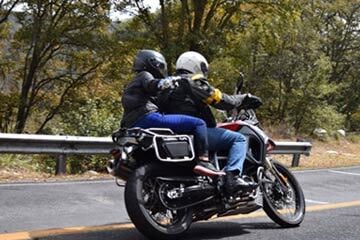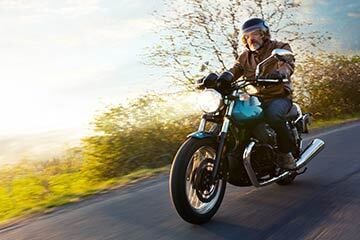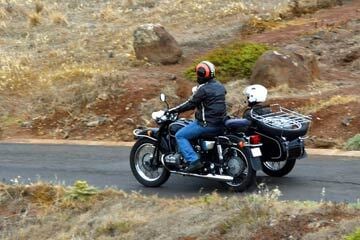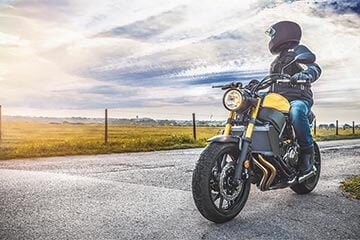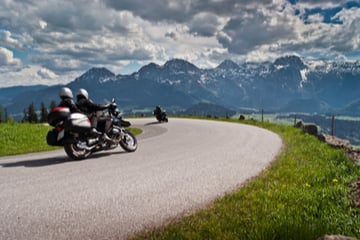What affects the price of motorbike insurance?
The type of motorbike you ride. Insurers place motorbikes into insurance groups. These often range from 1-17, but can go up to 22 depending on the insurer. Different types of motorbike have different engine sizes and values, which impact the insurance group they're in. Mopeds and scooters with smaller engines are normally in lower groups. This means they're usually cheaper to insure than sports bikes or off-road bikes that have bigger engines and higher top speeds.
Your age is one of the main factors insurers consider. If you're a younger driver, you're unlikely to have a lot of experience on the roads. This means you're statistically more likely to be involved in an accident and make a claim. So, you're likely to pay more than older, more experienced riders.
Your annual mileage. The more miles you drive, the more chance you have of being involved in an accident. This increases the risk of needing replacements or repairs for your motorbike, or claiming for an injury. So, having a high annual mileage typically leads to higher insurance costs.
Any modifications you've made can make repairs and replacements more time-consuming and expensive. This is because it's harder to source certain parts. So, modifying your Suzuki motorbike in any way could mean you pay more for insurance.
Previous claims and convictions can impact how much you pay for insurance. This is because they make you more of a risk to insurers.
Where you live. Living in an area with higher rates of vehicle crime usually means you pay more to insure your Suzuki motorbike.
What are the classes of use for motorbike insurance?
There are 4 classes of use:
- Social, domestic and pleasure (SDP or SD&P). You should choose this class if you only use your Suzuki motorbike for personal trips. This can include days out or taking a motorbike test. Motorbike insurance for SD&P use costs £2853 on average.
- Social and commuting (SDPC) covers social use as well as commuting to a single, permanent place of work. It also covers you if you ride your motorbike to a bus or train station to use public transport as part of your commute. A social and commuting policy costs an average of £3783.
- Class 1 business use covers riders who use their motorbike to travel to different places as part of their job. This includes going to meet clients or suppliers and riding to different parts of the country for work. Class 1 business use for a single rider costs £5443. Business use for you and a named rider is slightly more expensive, with an average cost of £8193.
- Courier, delivery or dispatch insurance. This covers you if you're a delivery driver. If this applies to you, you need a specialist policy. This tends to be the most expensive class of use because you could be carrying expensive cargo. On average, motorbike insurance for delivery use costs £2,2353.
3Based on Confused.com data June 2023
Suzuki motorcycles history and facts
Suzuki was founded by Michio Suzuki in 1909 in Hamamatsu, Japan, originally manufacturing looms for Japan's silk industry. They began manufacturing cars in the 1930s, but didn't enter the motorbike market until after the Second World War. Launched in 1952 as a response to the post-war demand for cheap transportation, the Power Free was a bicycle fitted with a 36cc engine.
1953 saw the introduction of the Diamond Free motorised bicycle with a 60cc engine. By 1954, the company had changed its name from Suzuki Loom Works to Suzuki Motor Co. They also launched their first 'real' motorbike in the same year - the Colleda CO with a 90cc engine. This was soon followed by the Colleda COX with a 125cc engine in 1955.
It wasn't until the 1960s that Suzuki began attracting attention on the world stage. They won their first Grand Prix in 1962, beginning a long history of racing wins. In 1970, they became the first Japanese manufacturer to win the motocross world championship.
Over the years, both Suzuki's motorbike and car manufacturing activities continued to flourish. By 1999, cumulative motorbike production had reached 40 million units. Today, Suzuki motor is one of Japan's largest listed companies.
Suzuki has said that they don't plan on going fully electric with their motorbike range. But they've announced plans to have 8 electric motorbikes on the market by 2030. The first - an all-electric version of the Burgman Street 125 - is expected in 2024. It has the equivalent of a 150cc engine.
Despite having no current plans to go all-electric with their motorbikes, Suzuki still plans on going carbon-neutral in Europe by 2050. They currently plan on developing motorbikes with engines that run on biofuels.

